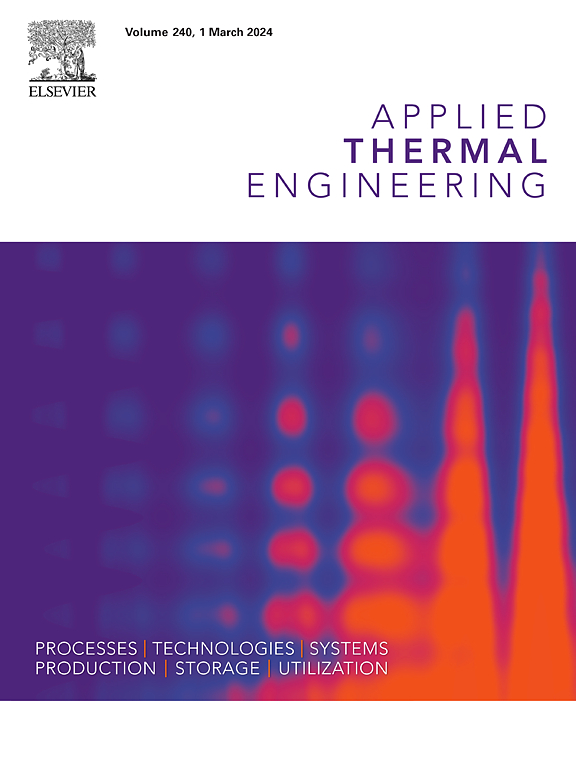An optimization method coupling the response surface methodology and multi-objective particle swarm to enhance the performance of a novel water Trombe wall
IF 6.1
2区 工程技术
Q2 ENERGY & FUELS
引用次数: 0
Abstract
This study proposes a novel water Trombe wall (WTW) that integrates composite parabolic concentrators (CPC) with pulsating heat pipes (PHP) to enhance the heat storage rate in building walls. The thermal performance of the WTW is influenced by key operating parameters such as solar radiation intensity, water temperature, water flow rate, and their interactions. However, the specific impacts of these parameters on thermal performance remains unclear, and effective optimization methods are limited. To address this, a new method combining Multi-Objective Particle Swarm Optimization (MOPSO) with Response Surface Methodology (RSM) is proposed to improve the thermal performance of the WTW. The findings reveal that the primary contributors to the average heat storage rate of the WTW are solar radiation intensity (52.43 %), cooling water temperature (19.24 %), and the quadratic effect of cooling water flow rate (19.09 %). Furthermore, under optimal conditions of solar radiation intensity of 1000 W/m2, a cooling water temperature of 8 °C, and a cooling water flow rate of 16.2 L/h, the Pareto front solution achieves a heat storage rate of 107.6 W and a thermal efficiency of 71.7 %. This study presents an innovative structural design and a method for optimizing the performance of building walls.

求助全文
约1分钟内获得全文
求助全文
来源期刊

Applied Thermal Engineering
工程技术-工程:机械
CiteScore
11.30
自引率
15.60%
发文量
1474
审稿时长
57 days
期刊介绍:
Applied Thermal Engineering disseminates novel research related to the design, development and demonstration of components, devices, equipment, technologies and systems involving thermal processes for the production, storage, utilization and conservation of energy, with a focus on engineering application.
The journal publishes high-quality and high-impact Original Research Articles, Review Articles, Short Communications and Letters to the Editor on cutting-edge innovations in research, and recent advances or issues of interest to the thermal engineering community.
 求助内容:
求助内容: 应助结果提醒方式:
应助结果提醒方式:


